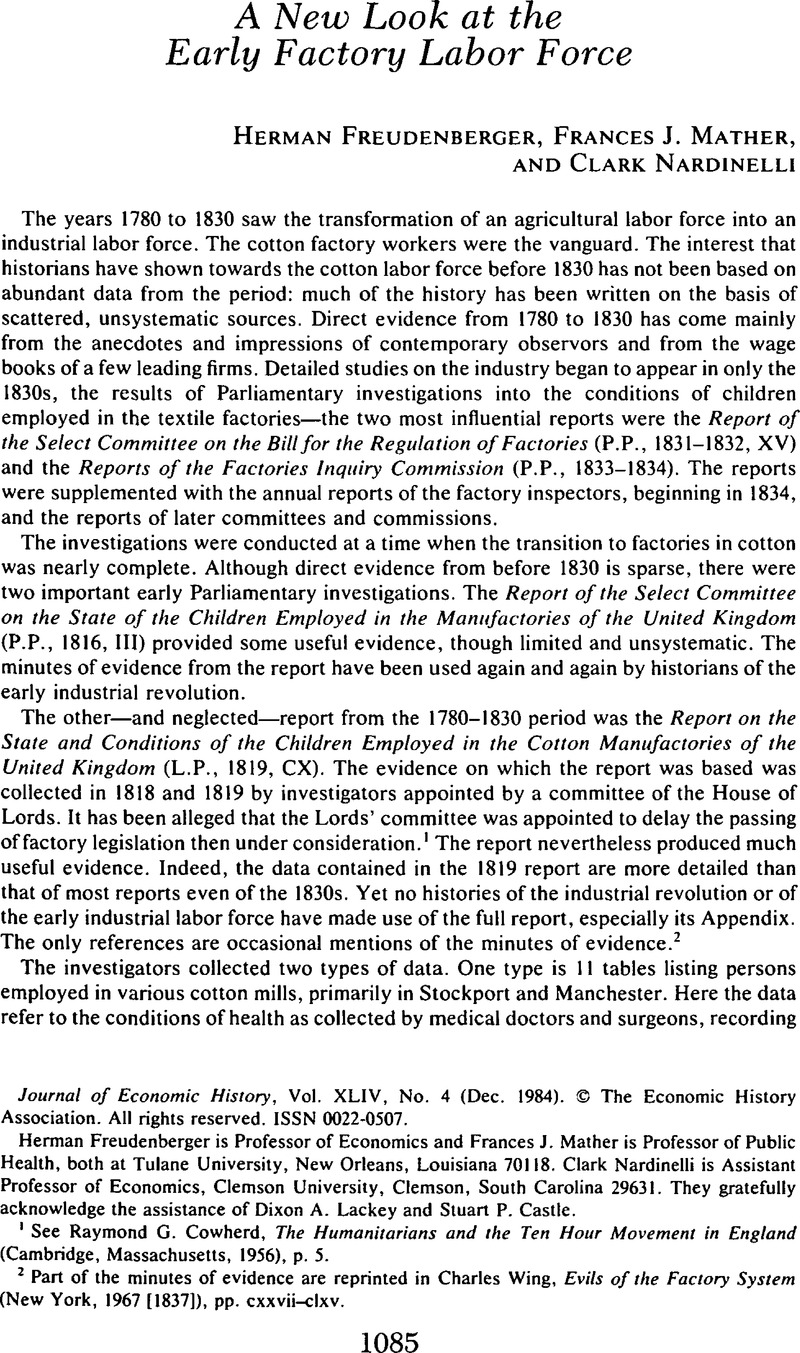Published online by Cambridge University Press: 03 March 2009

1 See Raymond G. Cowherd, The Humanitarians and the Ten Hour Movement in England (Cambridge, Massachusetts, 1956), p. 5.
2 Part of the minutes of evidence are reprinted in Wing, Charles, Evils of the Factory System (New York, 1967 [1837]), pp. cxxvii–clxv.Google Scholar
3 The percentage for children in 1833 was calculated from data in the Supplementary Report of the Factories Inquiry Commission (P.P., 1834), Part I, pp. 19–37. The percentage in 1835 is from data in the Reports of the Inspectors of Factories, 31 October 1835.Google Scholar
4 Smelser, Neil J., Social Change in the Industrial Revolution (Chicago, 1959).Google Scholar
5 Edwards, M. M. and Lloyd-Jones, R., “N. J. Smelser and the Cotton Factory: A Reassessment,” Textile History and Economic History, ed. Harte, N. B. and Ponting, K. G. (Manchester, 1973), pp. 304–19.Google Scholar
6 The correlation coefficient between mean weeks lost and the percentage of workers in the mill listed as unhealthy is 0.84.Google Scholar
7 The average counts spun in Stockport and Manchester were calculated from a table on pp. 119–23 of the Supplementary Report of the Factories Inquiry Commission, Part I (P.P., 1834, XIX).Google Scholar
8 Highly skilled workers had significantly higher incomes than less skilled workers. In 1818–1819, the average weekly income of fine spinners was 42s. 3d.; the average weekly income of coarse spinners was 33s. 3d. See Collier, Frances, The Family Economy of the Working Classes in the Cotton Industry, 1784–1833 (Manchester, 1964), p. 64. The income differentials existed for other workers as well, though the differences were not as large as for spinners.Google Scholar
9 The relationship between health and productivity is also being explored as part of a major research project based on geneological data. See Fogel, Robert W. and Engerman, Stanley L., eds., Secular Trends in Nutrition, Labor Welfare, and Labor Productivüy, special issue of Social Science History, 6 (Fall 1982).Google Scholar